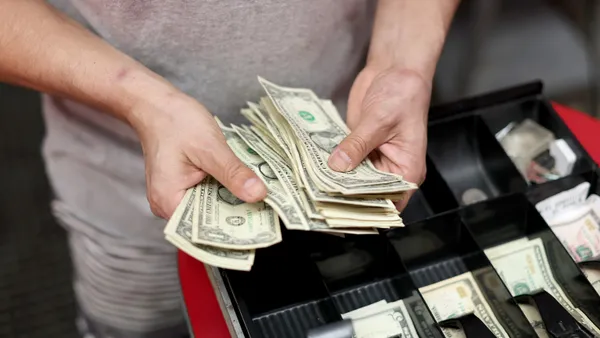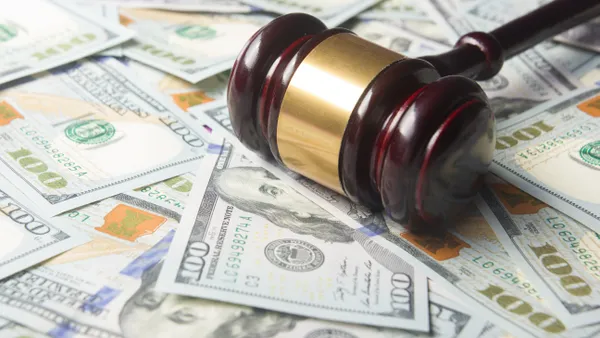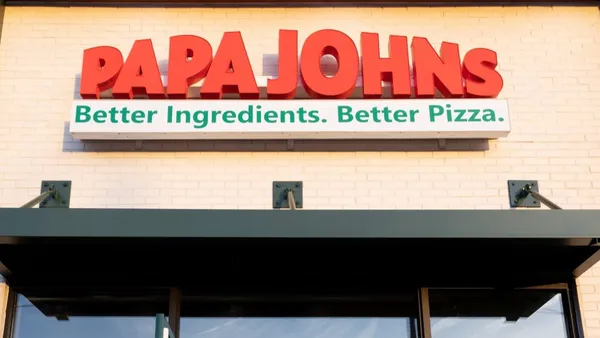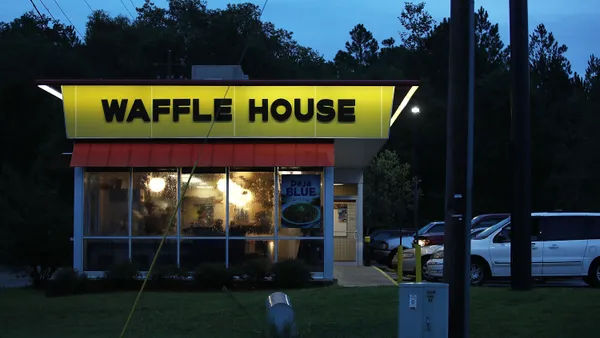UPDATE: April 29, 2020: Starbucks' Q2 revenue slipped 5% to $5.99 billion compared to $6.31 billion in the year-ago period, according to company earnings released on Tuesday. Net income fell 50.5% to $328.4 billion from $663.2 in the prior year. Global same-store sales slipped 10%. The chain plans to reopen 90% of its U.S. stores by early June with modified service including drive-thru, delivery, in-store pickup and a new outdoor system called the Entryway Handoff that allows diners to collect their orders without going inside a store, according to a company earnings call Tuesday. Fifty percent of U.S. stores are currently closed. Starbucks China has reopened 98% of its stores and the company predicts the segment will fully recover by Q4.
The first stage of U.S. store reopenings will only involve 30 cafes, COO Rosalind Brewer said on the call, and Starbucks will oversee the performance of those locations before moving forward. These stores will have no seating. The company expects its U.S. market to have a slower recovery than China and predicts that Q3 will be more heavily impacted by novel coronavirus pressure than Q2.
Dive Brief:
- Starbucks was on pace to have its strongest quarter in four years for its U.S. business before the coronavirus pandemic disrupted its performance, according to a regulatory filing. U.S. comp sales and transactions were up 8% and 4%, respectively, through March 11, but the last week of March dragged comp sales 60% to 70%.
- By the end of the first quarter 2020, drive-thru locations made up 58% of its U.S. footprint, and 76% of those stores were open amid COVID-19. Fifty-five percent of U.S. licensed stores were also open, with most operating in grocery stores.
- At the end of fiscal Q2 2020, comp sales were down 3%.
Dive Insight:
Starbucks' dismal Q2 2020 results come on the heels of similar results from McDonald's, which announced yesterday that its global same-store sales slipped 3.4% compared to positive growth of 5.4% in the year-ago quarter.
The degree to which the coronavirus pandemic has damaged the financial performance of both of these QSR giants doesn't bode well for U.S. restaurant chains, and is especially bleak foreshadowing for independent brands.
Starbucks is better positioned than many major restaurant chains because of both its ratio of drive-thru stores and its experience with the effects of COVID-19 in China, where it had to close thousands of its stores. The chain expects to take a hit of more than $400 million due to this operational disruption.
Starbucks' commitment to "catastrophe pay" for employees who are impacted by COVID-19 could further erode margins, but also cements the brand's position as a progressive leader in the restaurant benefits space. It's also committing $10 million in financial relief to its partners around the world as part of its newly established Starbucks Global Partner Emergency Relief Program. Such efforts could benefit future recruiting and retention efforts and make customers feel safe ordering from the chain in the meantime.
It's unclear, however, how much more financial loss Starbucks will weather as COVID-19 cases continue to grow daily in the U.S. But the fact that a majority of Starbucks stores can remain open for delivery, drive-thru and pickup in the U.S. — combined with the company's robust digital ecosystem — could help mitigate domestic losses.














